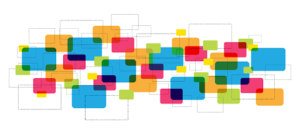
User Interface testing involves testing the functionality of any application from the end user’s point of view. It may or may not involve graphical elements. It essentially tests functionalities which require direct interaction with the end users. The application undergoing testing may be robust in terms of performance, business logic handling, security etc. However, all this will be in vain if the end user does not have a favourable experience. Hence, it is important to conduct user interface testing to ensure that besides the internal functioning, the user facing layer aka presentation layer is also properly verified and validated.
Every type of testing has its own advantages, pitfalls and challenges. In this article, we will talk about a few challenges faced while testing user interfaces.

With organizations following agile development approach, it is an obvious fact that applications evolve with every development cycle. The user interface changes can happen due to multiple reasons like new version release, changes in requirements, changes in functionality etc. Any such changes directly or indirectly impact the UI, thus rendering the test cases vulnerable to failures. Keeping pace with these changes becomes extremely difficult.
The business stakeholders are more concerned about how the changes have been correctly incorporated and are available to their customers with every new release. This clearly indicates the need for rigorous testing efforts.


In continuation from the previous point, regression testing becomes a daunting task when frequent changes are there. The changes may not necessarily be in the user interface, but could be in any other interfacing element or underlying logic or data. For example, If the field length of any element changes from 15 to 10, but user interfacing element is not updated with necessary checks in place, then there will be issues while testing, depending on the test conditions applied to that particular element.
There could be multiple such scenarios, where any change in one element directly or indirectly impacts some other element. The test cases need to be updated on a regular basis to reflect every change.
There is a high probability that all possible scenarios are not covered and some bugs escape unnoticed in the build. This has a direct impact on the end user experience of the application.

Visual representation of data, process, statistics etc is much easier to comprehend. No wonder the customers expect quick processes and visually appealing interfaces. The data is dynamic in nature and sometimes can take time to process and present. Generating charts, diagrams, graphical representation etc makes it challenging to test such applications. This is one such example. There are many other complex elements which make user experience much better, but also make testing a tough job.
If testing of such complex elements is not done properly, then the whole purpose of having them in place to elevate the end user experience gets defeated.

Automating UI testing can be a challenging task as automation simulates end users using HTML locators. Details of challenges related to automation have been covered in our blog “Bane of Automation”.
Besides the factors mentioned in the said blog, script maintenance also becomes a herculean effort, given the fact that user interface is prone to frequent changes. Hence, choosing and implementing a right automation tool is only one part of the puzzle, the other side is to continuously maintain it.

UI testing requires a significant amount of investment in terms of time and effort, thus affecting monetary aspect as well. Changes in UI involve changes in tests of same or linked elements, thus adding to overall testing time. For the business stakeholders what really matters is the returns that they get for financial, human and technological resource investment. Giving a numerical value of ROI in UI testing becomes a tough task.
The success of any application or product is solely based on its acceptance by the end users. An application may be exceptionally good in functionality and high rated in performance, but it is of no use if it does not cater to positive end user experience. Thus, user Interface testing becomes extremely critical in the software release process, since it validates the user friendliness of the application.
Over the years the whole UI testing strategy has matured and we at Webomates have a well-defined process in place for all your User Interface testing needs.
If you are interested in learning more about the services offered by Webomates then please click here and schedule a demo, or reach out to us at info@webomates.com. You can also avail a free trial by clicking here.
Tags: Software Testing, UI testing, user interface
Test Smarter, Not Harder: Get Your Free Trial Today!
Start Free Trial
Leave a Reply